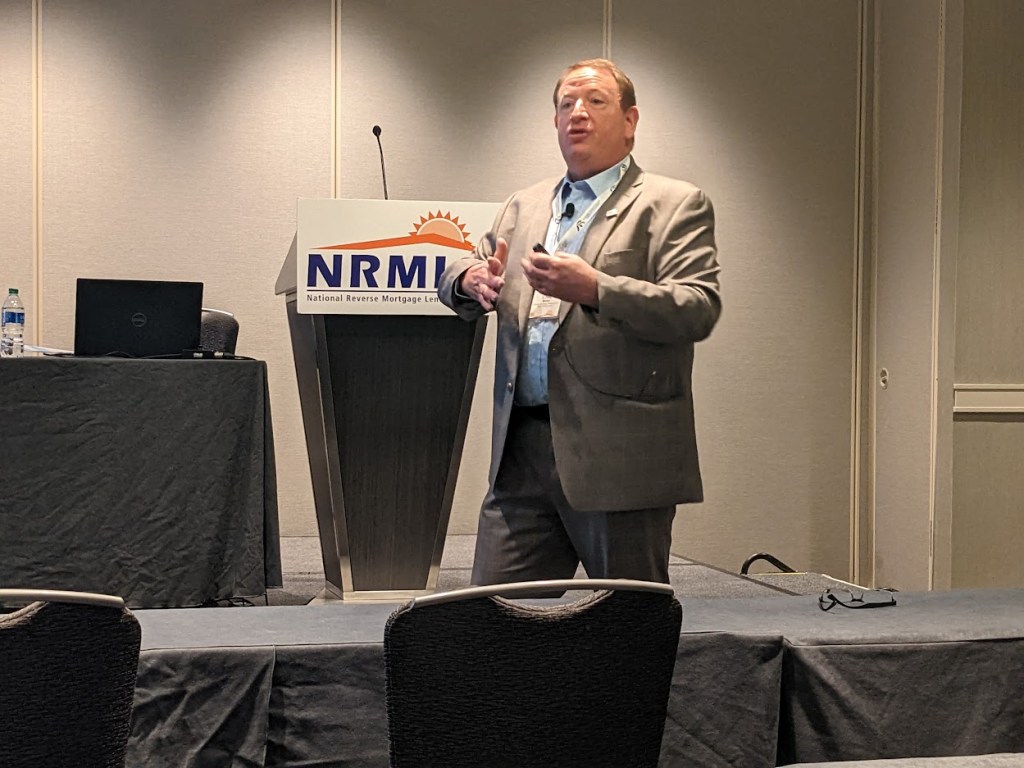It may not always occur to a reverse mortgage professional to think of Home Equity Conversion Mortgage (HECM) product features as “premium.” However, depending on the borrower’s need, a HECM may fulfill a specialized need that borrowers see as premium, reverse mortgage industry trainer Craig Barnes said during a sales-oriented webinar hosted by the National Reverse Mortgage Lenders Association (NRMLA).
Barnes told reverse mortgage professionals during the presentation about the potential for HECM premium product features — especially for borrowers that need the relief a reverse mortgage can provide.
HECM as a premium product
Positioning the HECM as a premium product comes down to the potential solutions it might provide, Barnes said. People are willing to pay more for a product that comes with additional features — or where the cost is a sign of quality.
“Why wouldn’t you necessarily pay more for a product that has more features, or a higher level of features?,” Barnes said. “We pay more for an airline seat that’s in first class and that has more legroom, or a car with more features, or a better cell phone plan. Those are features that we’re willing to pay more for. Why not pay more for a mortgage that doesn’t require monthly principal and interest payments, and is non-recourse?”

Reverse mortgage products are commonly perceived as a loan of last resort. However, reverse mortgage professionals are more likely to find success by selling a HECM as a more robustly featured mortgage, especially since there is a perception of higher upfront costs associated with the product, Barnes said.
“Well, why don’t we think the same way about mortgages? Do you ever think of paying more for a mortgage? No,” he said. “On a HECM, we know that the closing costs can be more expensive, especially when you’re factoring in MIP [when compared with] a traditional mortgage. But what are you getting for that higher cost? Well, you’re not required to make principal and interest payments. You never have to pay back more than the home is worth. There’s a line of credit growth feature, and it’s government-insured.”
Selling a reverse mortgage as a premium product with additional features could also help change client perceptions about the product, he said.
Reverse mortgage client needs
Describing a HECM as “premium” is not only a tool, but may also help to address the common needs of reverse mortgage borrowers. One way to illustrate this is through average balances in 401K accounts, he said.
According to data from Vanguard (via Business Insider), the average 401K balance for someone age 65 or older is $255,151 — with a median of $82,297. For those between the age of 55 and 64, the average is $232,379.
For a senior on the cusp of retirement who must make their retirement savings last for the rest of their lives, the average $250,000 balance may be insufficient.
“That’s simply not enough to retire,” he said. “That’s when we look at what we can do, and a solution we might be able to provide to that borrower who wants to retire, but maybe doesn’t have enough money to do so.”
Certain product features could be a solution, especially when it comes to the HECM line of credit, Barnes said. They can also eliminate what is likely a big expense in the process.
“Set up a line of credit for future use,” he said. “A line of credit that grows over time the longer they leave it sitting there. And even if they use it, the unused portion still grows. That’s something to think about as a [retirement] safety net. And what are they also retiring, if they have one? That mortgage payment that they have today.”
‘Too much month at the end of my money’
Inflation and other living expenses can also encroach on a senior’s retirement plans, Barnes said.
“They simply don’t have enough money coming in to meet their expenses,” Barnes said. “A line that I heard many, many years ago was from a borrower who said, ‘there’s too much month at the end of my money.’ That’s a great saying when we think about what a typical borrower might be going through. They just don’t have enough money.”
Another financial obligation that may not be associated with seniors is debt, including credit card debt. The average senior between the age of 65 and 74 has an average of $7,030 in credit card debt, according to data from the Federal Reserve’s 2019 Survey of Consumer Finances. That number increases to over $8,000 for a senior at or over the age of 75.
Baby Boomers are more comfortable with debt compared to their parents from both the Greatest and Silent Generations, Barnes said.
“They’ve had multiple mortgages, they refinanced their houses they bought, they have revolving debt, as far as credit cards, they have installment debt, like car loans, etc.,” he said. “They probably have applied for a credit card because it’s raining outside and they’re getting a free umbrella.”
If a senior needs additional cash flow to relieve themselves of high-interest credit card debt, a reverse mortgage is one option they can explore, Barnes said.



